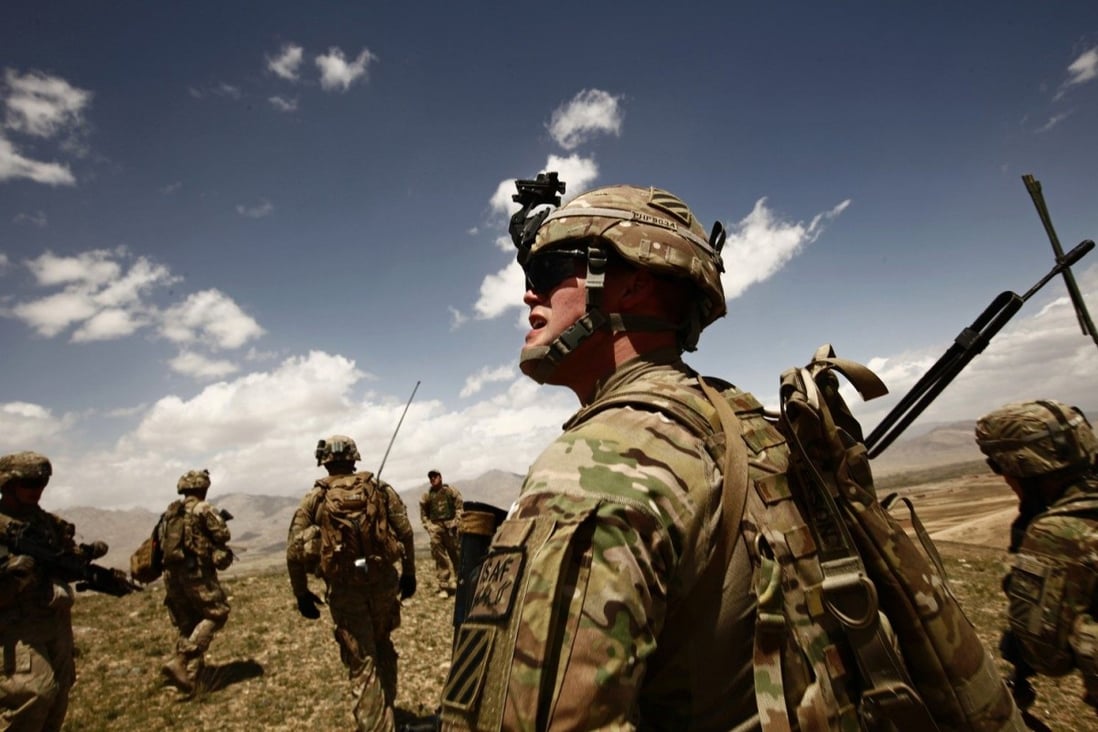David Dodwell

As President Joe Biden ends a forlorn 20-year effort at nation-building, the United States joins a line of aspiring conquerors and peacemakers that stretches back centuries. Hearts can only bleed for the modernising Afghans left behind, in particular their women and those seen to have assisted American occupying forces, as the Taliban wreak havoc, provide safe haven to Islamic extremists, and weave around a tribal mosaic that has made Afghanistan ungovernable for a millennium.
Before Biden, the Russians suffered a similar humbling Afghan fate, along with British colonial forces, Tamerlane, the Moghuls and Genghis Khan. Even before the last Americans are airlifted out, speculation has begun on how long the Afghan government will survive, and which naive hegemon will next be sucked in.
Thousands of Afghans flee as UN warns of 'unprecedented' civilian deaths from Taliban offensives
The US consensus – from the Defence Department and Council on Foreign Relations to leading academics such as John Mearsheimer and Graham Allison –would be China, which has swiftly deepening economic and strategic interests in the region, and which, from a US perspective, is set for conflict with the West.
Despite the intellectual weight and experience of this view, I believe this consensus is mistaken. Just because the US assumes China has aggressive, expansionist intent does not mean this is so.
Just as likely is a sensible defensive strategy that seeks global economic engagement, better livelihoods for Chinese people and domestic security after a dismal century of humiliating occupation by Western colonisers.
If, like Mearsheimer, you believe aggression is inevitable, there can be little doubt that China’s
Belt and Road infrastructure-building strategy is a covert bid to build soft power and extend control.
Yet China’s strategy can equally plausibly help to stabilise and build the economies of neighbouring countries, providing China with more domestic security and wealthier neighbours with which to invest and trade.
But America’s Afghanistan withdrawal provides a litmus test: Will China be sucked in? Are the hawks right that China is an aggressive power with an offensive agenda? Or is it a defensive power set on protecting the economic gains that have lifted 800 million Chinese out of poverty and restored China’s dignified and respected place in the world?
China pledges to support Taliban role in restoring peace in Afghanistan after US withdrawal
The Western view of China as aggressor is built not just on the theoretical calculus of Mearsheimer’s “offensive realism” or Allison’s “Thucydides Trap”, but on a laundry list of recent aggressions – from naval exercises in the South China Sea to Xinjiang and the national security “crackdown” in Hong Kong.
Part of this narrative is that China’s military budget has leapt by 76 per cent to US$252 billion over the past decade, that it now has the world’s largest naval fleet, an integrated air defence system, and a massive armoury of long-range ballistic and cruise missiles.
As the US Defence Department reported to Congress, the Communist Party “has a strategic end state that it is working towards, which if achieved and its accompanying military modernisation left unaddressed, will have serious implications for US national interests and the security of the international rules-based order”.
The US started with an assumption of a Chinese “offensive agenda” and cherry-picked data that supports the assumption. This justifies blocking China’s technological development, barring investment from or trade with its companies, and even decoupling.
But take the same data sets and look at China’s intentions through a fresh prism. Yes, Chinese defence spending is significantly up, but it is modest (1.9 per cent of gross domestic product) compared with US spending of US$778 billion last year – 4.4 per cent of GDP, 39 per cent of military spending worldwide, and more than the next 11 military spenders combined.
Yes, China has a military base in Djibouti in east Africa, but Djibouti hosts a total of six military bases, including for the US and Japan. In contrast, the US has an estimated 800 bases worldwide.
Apart from its modest Djibouti footprint, China has military personnel in a signals intelligence presence in Myanmar, and a tiny outpost in Tajikistan, close to the Wakhan Corridor which provides a narrow link between China and Afghanistan – underwhelming compared with the 172,000 American troops on active duty overseas.
China has fought just one war in the past 50 years – the brief and embarrassing invasion of Vietnam in 1979. In contrast, the US has fought about 14 wars since 1980.
What US military experts seem to fear is not the reality of Chinese offensive activity, but its offensive potential. A working assumption is that a country with such potential will not be able to resist the temptation to use it aggressively.
But once you flip this logic and think it possible that defensive reflexes have driven China’s military modernisation, then the assumption that China is on a path of hegemonic expansion crumbles.
True, China has a tiny outpost in Tajikistan close to Afghanistan, but if the intent is defensive, then a Chinese intervention in Afghanistan will not occur any time soon. Its interests in Pakistan, and its role as a Pakistani ally, could well create temptations to intervene in Afghanistan if the Taliban further destabilise the region and undermine hopes of reaching the Indian Ocean and the Gulf via the Pakistani port of Gwadar.
It is such temptations – and the supposedly irresistible pull of offensive realism – that have for centuries sucked great powers into a humiliating mess in places like Afghanistan. Let’s see if the pull of China’s “defensive realism” can make a difference.
No comments:
Post a Comment